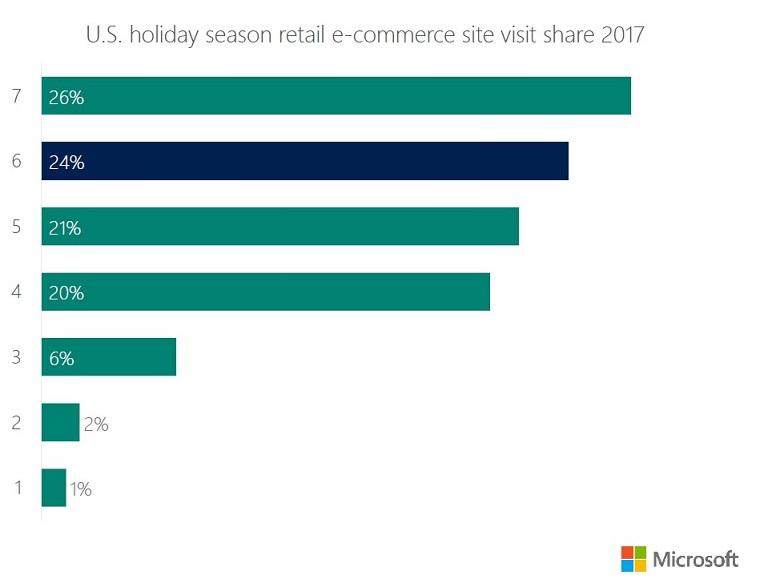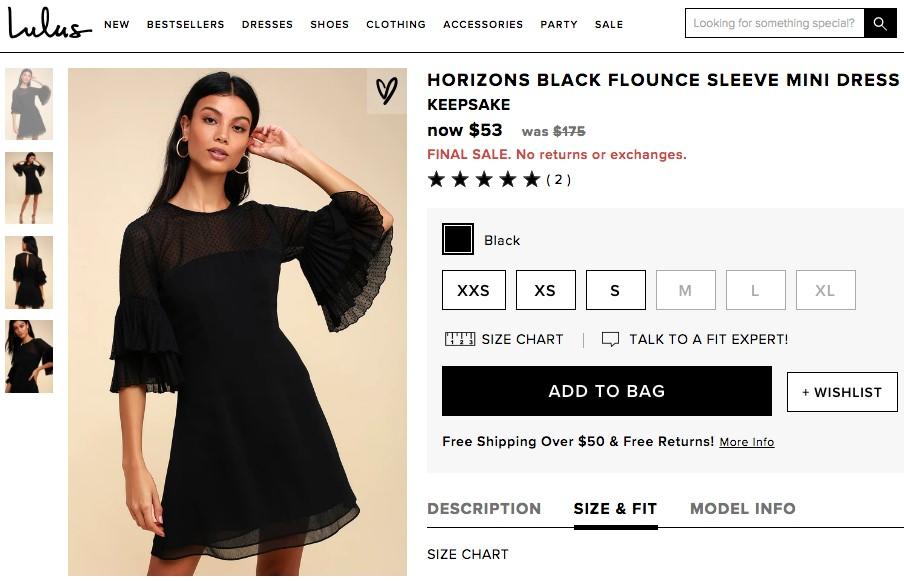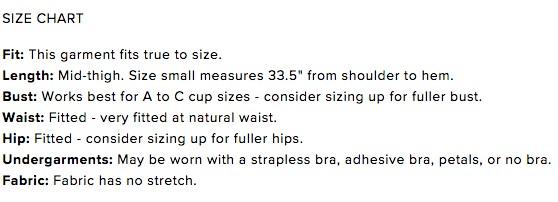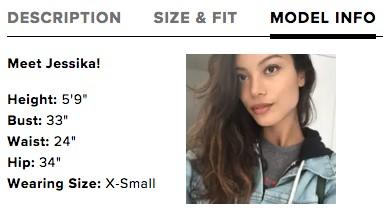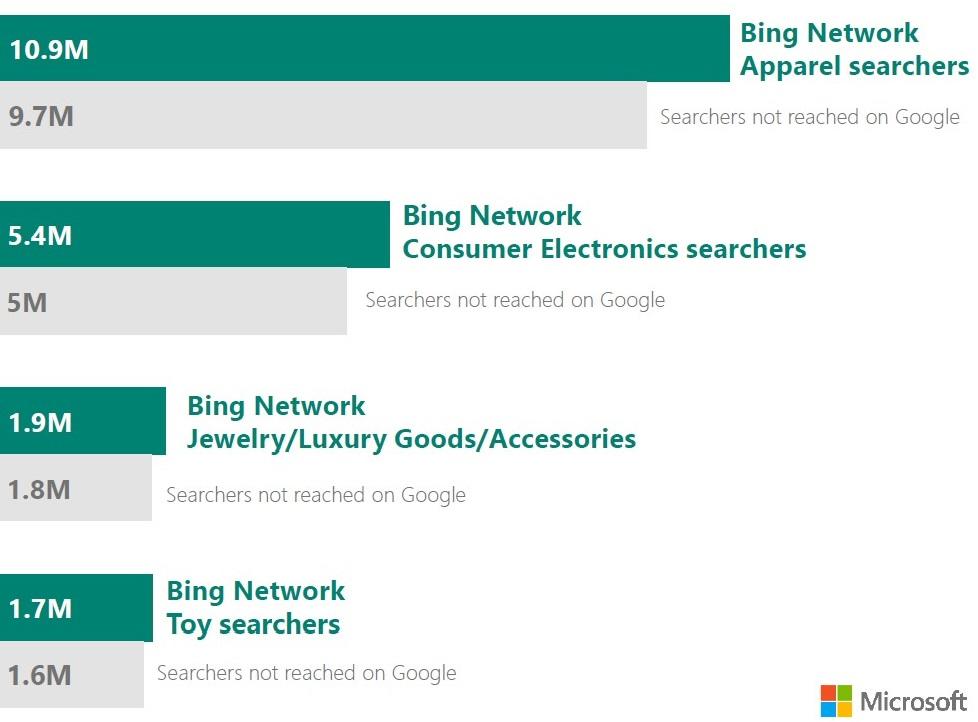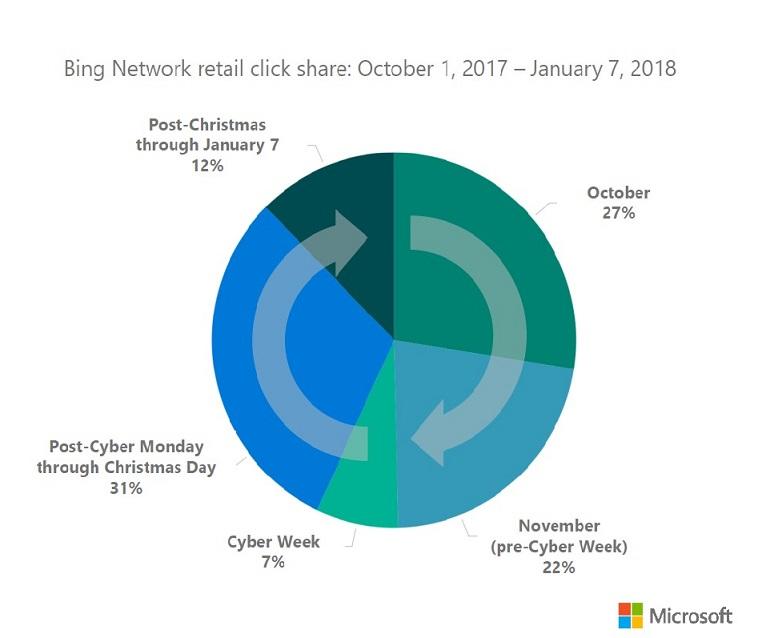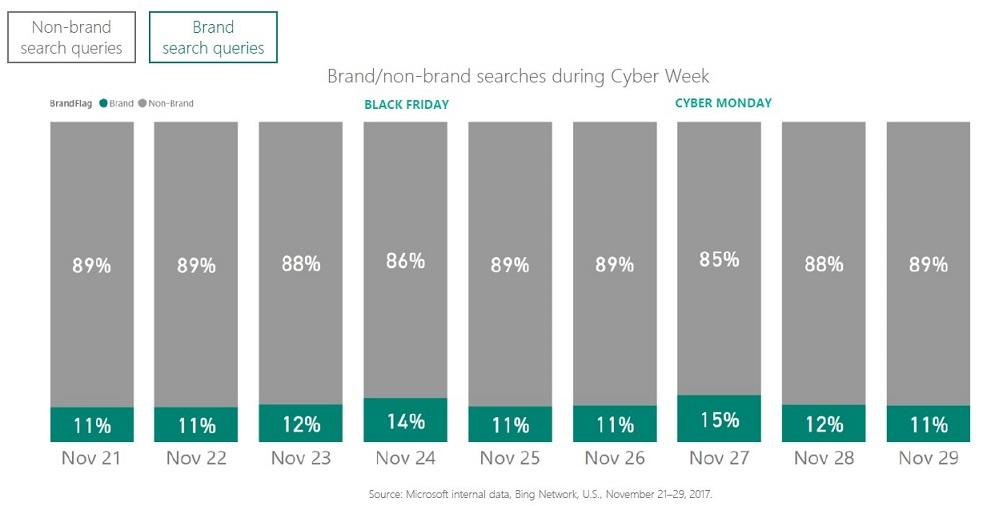While you might be pushing aside your temptation to indulge in your first pumpkin spiced latte of 2018 and opting to hold onto your beach chair as long as humanly possible, the holiday season is coming for us whether we are ready or not.
Some of you might be the kind of shoppers who head to the mall after Christmas Eve dinner, but that last-minute approach to holiday shopping won’t translate well to holiday marketing. To make the most of your holiday sales, you need to plan strategically weeks ahead of important dates.

Luckily, our friends over at Bing dug through their massive database and pulled a plethora of useful statistics around holiday shopping to share. In this post, you will find 14 of the most informative holiday shopping statistics that will help you plan for the most financially successful season yet!
#1: Online Sales Are Predicted to Grow 15% in 2018
Absolutely! Think of this statistic as an early holiday gift, but don’t think your work is finished. The prediction of increased online sales this holiday season does NOT mean you can take it easy on your planning. In fact, higher sales will probably lead to more competition, so it’s essential to get ahead of your rivals and organize your online campaigns early. I’m sorry that your gift comes with some effort, but putting in this work will pay off if you prepare wisely for the holiday rush.
#2: 40% of All Online Sales Will Likely Be Made via Mobile Devices
That’s right, folks! Mobile strategy continues to grow in importance. People these days are busier than ever before, so holiday shopping on their phones is becoming a more and more prevalent behavior. So, what can you do to make sure your online efforts are maximized for mobile traffic? Here are a few things to start with:
- Make sure your website is mobile optimized! This is by far the most critical component of your mobile strategy.
- Ensure your website’s speed is optimized for mobile. You can test your site speed by using Google’s Test My Site.
- Adjust your mobile bids based on your analytical data. When do your visitors most often come from mobile? You should be bidding higher during these times.
- Keep forms and checkouts as simple as possible. Minimize the number of fields your prospects have to fill out to download your ebook, and ensure your checkout process doesn’t require customers to provide unnecessary fields, like a secondary email or a mother’s maiden name. Simplicity is key when it comes to mobile!
#3: Paid Search Was a Top Driver of Site Visits during the Holiday Season in 2017
This one was not entirely shocking to me because my own shopping process online often starts with Google or Bing. Whether it’s searching for a new rug or a pair of socks for my dad, search engines are typically my starting point – and I’m not alone!
This statistic is just another reminder to plan your paid search campaigns in advance. Competition also rises during peak holiday time so adjusting bids, configuring “holiday” keyword focused campaigns, and adjusting your ad copy to make sure it’s seasonably ready are all important aspects of planning for the paid search holiday season.
#4: 47% of Shoppers Don’t Want to Pay for Shipping
I mean, who wants to pay for shipping, really? I imagine there are some less budget-conscious parties that do not care, but Amazon Prime is successful for a reason, right? Because the percentage of people turned off by shipping costs is quite high, advertising the fact that you do indeed provide free shipping could really be the key to making you win over your competitors.
Think about all of the places that you can advertise this free shipping benefit in your holiday marketing campaigns. Sitelink extensions and ad copy are great places to show off this benefit in your search ads. Incorporate this into your social ads, as well, and make sure it is clearly stated on all product, landing, and checkout pages.
#5: 46% of Shoppers Want to Touch and Feel a Product Before Purchasing
If you do not have a physical storefront, do not let this statistic bum you out. Whether or not this is possible for your business model there are SO many things you can do to give shoppers a higher sense of trust that the product you are selling is an accurate representation of what would arrive on their doorstep.
Take the ecommerce women’s clothing store, Lulus, for example; on each one of their product pages they provide detailed information around the clothing item such as a description of the garment, specific size and fit details, and even information about the model so that you have a reference of what size and body type you are seeing in the images.
Other ways you can provide an accurate representation of your product include encouraging happy customers to review your products, featuring images from various angles that are helpful to scale the size of the product, and using descriptive text to explain what the product is like in three-dimensions.
#6: 37% of Shoppers Want the Option to Return Items
Not being able to return an item can be a real deal-breaker for some, and reasonably so! When buying products online, you may not always get what you expected. This feels risky for many, and it may in fact be the only thing keeping physical storefronts in business.
If you do indeed offer returns, make sure to state this in your marketing campaigns in a similar manner that you would if you were offering free shipping. Ensure your return policy is clearly outlined and not overly complicated. If your return policy is not transparent, it could lead to some angry and damaging online reviews, so be careful here!
#7: There Are 744 Million Retail Searches on Bing
Wow! Bing may be thought of as the underdog in the world of paid search, but it surely should not be, especially during the cheeriest time of the year. With the holidays approaching, more and more people are hopping on Bing to do their shopping, so if you are not advertising on the platform already, get on that! You can easily sync your Google Ads account with Bing, as well, making this a hassle-free set-up process.
#8: Today the Average Consume Spends $1,226 on Holiday Gifts
While I may be a frugal graduate student with a different view on holiday spending than most, this seems like a whole lot! But, hey, this is great news for you, am I right? Unless you’re selling cars or yachts – in that case, we should talk another time…
Another interesting statistic around holiday spending patterns that Bing shared is that this number of $1,226 actually doubles with household incomes of $100K+, and over one-third of Bing’s audience falls into this category! That’s right, Bing searchers spend more than the average internet searcher by 34%… And you thought I was out of holiday presents for you. Get your Bing holiday campaigns in order ASAP to capitalize on all those big spenders.
#9: 22% of People Plan to Start Their Holiday Shopping in October
October, yikes! That’s now! I must say that I do envy these people for being so organized for the holidays. Don’t panic, though: as the marketer, you still have time to get things rolling for the holidays, but you should think about prioritizing for these early planners to capitalize on their open wallets as soon as possible.
The larger chunk of people (31%) will start after Cyber Monday, but that percentage is not even that much higher than the early-bird October shoppers. Either way, just get a few campaigns out the door to help bring in more holiday sales throughout the entire season.
#10: The Week of November 5 Has the Highest YoY Retail Click Growth on Bing
November 5 seems to be the week where everyone really gets into holiday mode. Whether it’s the passing of Halloween or the realization that Christmas, Hanukah, and Kwanzaa are right around the corner, you need to be ready for this popular rush hour of shoppers. Adjust your bids, run some special promotions, and get in front of as many people as you can this week!
#11: 42% of Sales the Week Before Christmas Are Shoppers Looking to Buy Online and Pick Up in Store
Yes, there are a big chunk of procrastinators out there, which you likely knew. These shoppers do not often go through the online delivery system, because they have waited far too long to get their presents at the busiest time of the year. This is why it is so important to optimize for this week in a different manner.
Make it clear throughout your marketing campaigns that shoppers can order online and pick up in store before the holiday if you have that option available. Or, if you are the rare company that can deliver in this short time frame during the biggest gift-buying season, then advertise that and save these last-minute shoppers a trip to the store. I can guarantee they will appreciate it!
#12: December 26 Was the Fourth Busiest Shopping Day of the 2017 Season
This one sort of surprised me, possibly because I’m always in a post-Christmas food coma on December 26. But, it makes sense: everything is on sale December 26, right? Make sure to not miss out on this opportunity by planning ahead. Your boss might be so impressed by a successful holiday season after this day that the new year could be holding a promotion for you!
#13: 17.6% of Monthly Searches Are New Queries
That is a significant amount of new queries! But what does this mean for you? Well, most importantly, it means that you should closely consider how restrictive the keywords you are bidding on are.
Do you have every single one of your ad groups filled with 2-3 exact match keywords? This is likely far too restrictive. While it is good to keep your ad groups small and tightly knit, if you are bidding on all restrictive match types there will be no room to capture these new queries. Open up your keyword list by adding some more broad match types – just make sure to monitor your search query reports and add negatives to block irrelevant searches.
#14: Brand Searches Dominate during Black Friday and Cyber Monday
This is one of those tidbits of information that made immediate sense to me once I thought of my own user behavior on these popular online shopping days. Typically, when people are shopping on days like these, they are looking for something from a particular brand. This gives you an opportunity to capitalize on your brand keywords and even bid on your competitors’ brand keywords to tout your benefits and win over their customers.
So, what are you waiting for? It’s time to put your PSL down and go crush the 2018 holiday season!
